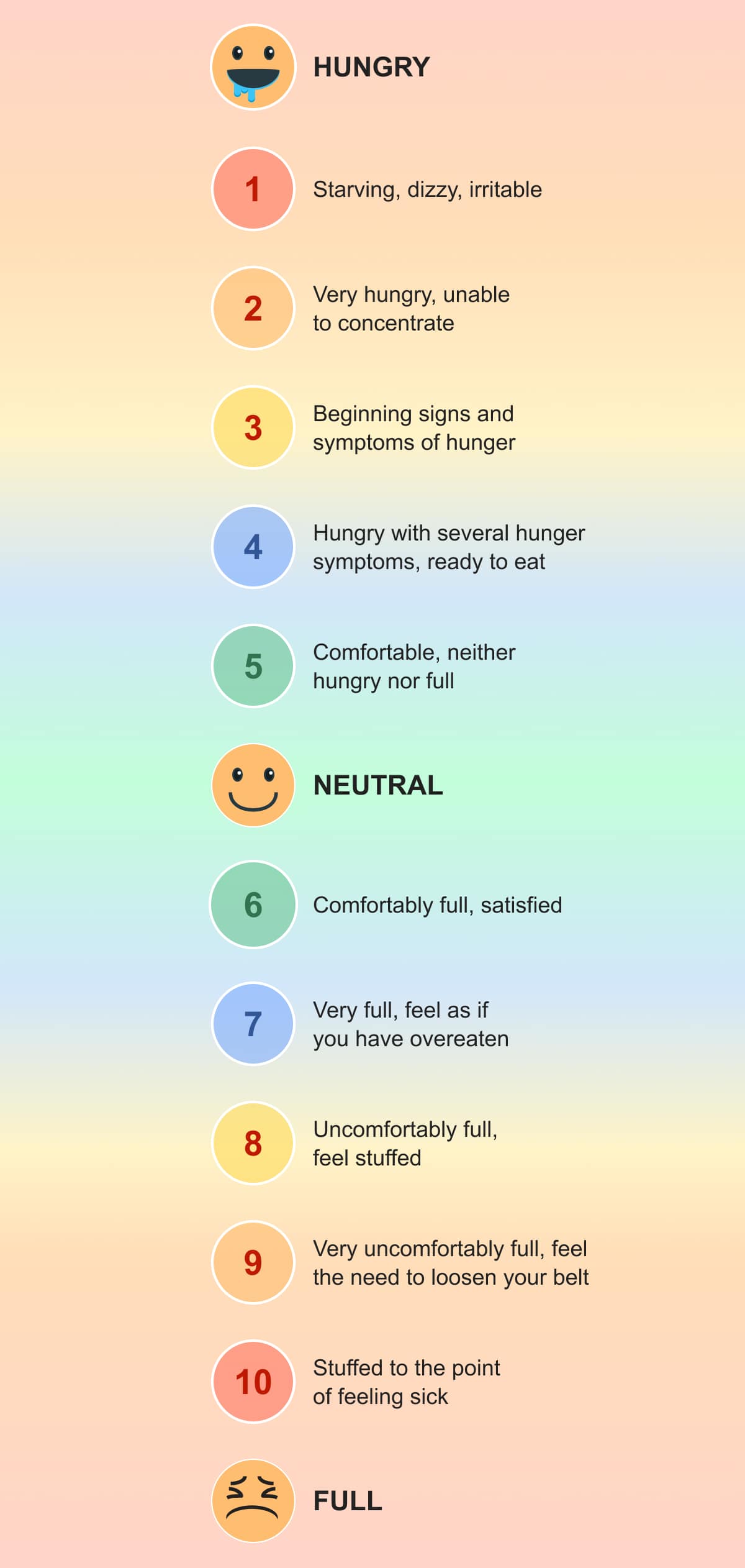The Hunger Satiety Rating Scale is a tool for increasing awareness of hunger levels and identifying where you fall on the hunger-fullness spectrum. This awareness can help guide eating decisions, including whether to eat and how much.
|
|
Are you truly hungry? Are you in need of a snack or a full meal? Or, if you notice you're not hungry, consider whether something other than physical hunger—like stress, boredom, or emotion, may be prompting you to eat.
|
|
Use the scale below to check in with your body:
|
|
The ends of the hunger and satiety scale are extremes and can be described as very uncomfortable.
|
|
|
|
|
|
Starving, dizzy, irritable
|
|
|
|
|
This is the feeling when you haven't eaten in several hours and will eat almost anything in sight.
|
|
|
This feeling often occurs after eating more than necessary, such as during a big Thanksgiving dinner or a restaurant meal where you've gone well beyond the point of satisfaction.
|
|
|
|
|
|
|
Beginning signs and symptoms of hunger
|
|
|
|
|
When you are beginning to feel the signs of hunger symptoms hunger to feeling multiple signs and symptoms of hunger (belly rumbling, slight empty feeling in your stomach), is when it may be a good time to eat a meal or snack because your body is physically telling you that it needs nourishment.
|
|
|
As you are eating, slow down and savor each bite so you can feel when you are comfortable, This is when hunger is gone but you're not quite satisfied.
|
|
|
|
|
|
|
Just-right. Comfortable and satisfied
|
|
|
|
|
At a 6, you will feel a slight fullness in your stomach, and it will be obvious that food is in there, but not so much that you feel bloated or heavy.
|
|
|
-
If you are living with diabetes, it's important to follow your blood sugar monitoring schedule while paying attention to your hunger and satiety cues. While you may sometimes sense when your blood sugar is too high or low, checking is always the most reliable way to know. Staying informed helps you make the best decisions about what to eat or avoid in the moment.
|
|
|
About the authors
Lexie Leightner is a registered dietitian and certified diabetes care and education specialist dedicated to helping others find joy in nourishing their bodies. She lives in Indianapolis with her husband and two children (ages 5 and 3). When she's not keeping up with her little ones or training for triathlons, Lexie enjoys exploring local restaurants and experimenting in the kitchen. Her goal is to empower others to live their healthiest, happiest lives, while also raising happy, helpful humans.
Recent articles
Featured
Weight Management
What is BMI, and what does it tell you?
8/25/2025
Get the latest tips to your inbox!
The care your need to feel care-free
9amHealth gives you the tools you need to manage your prediabetes and type 2 diabetes with ease.

